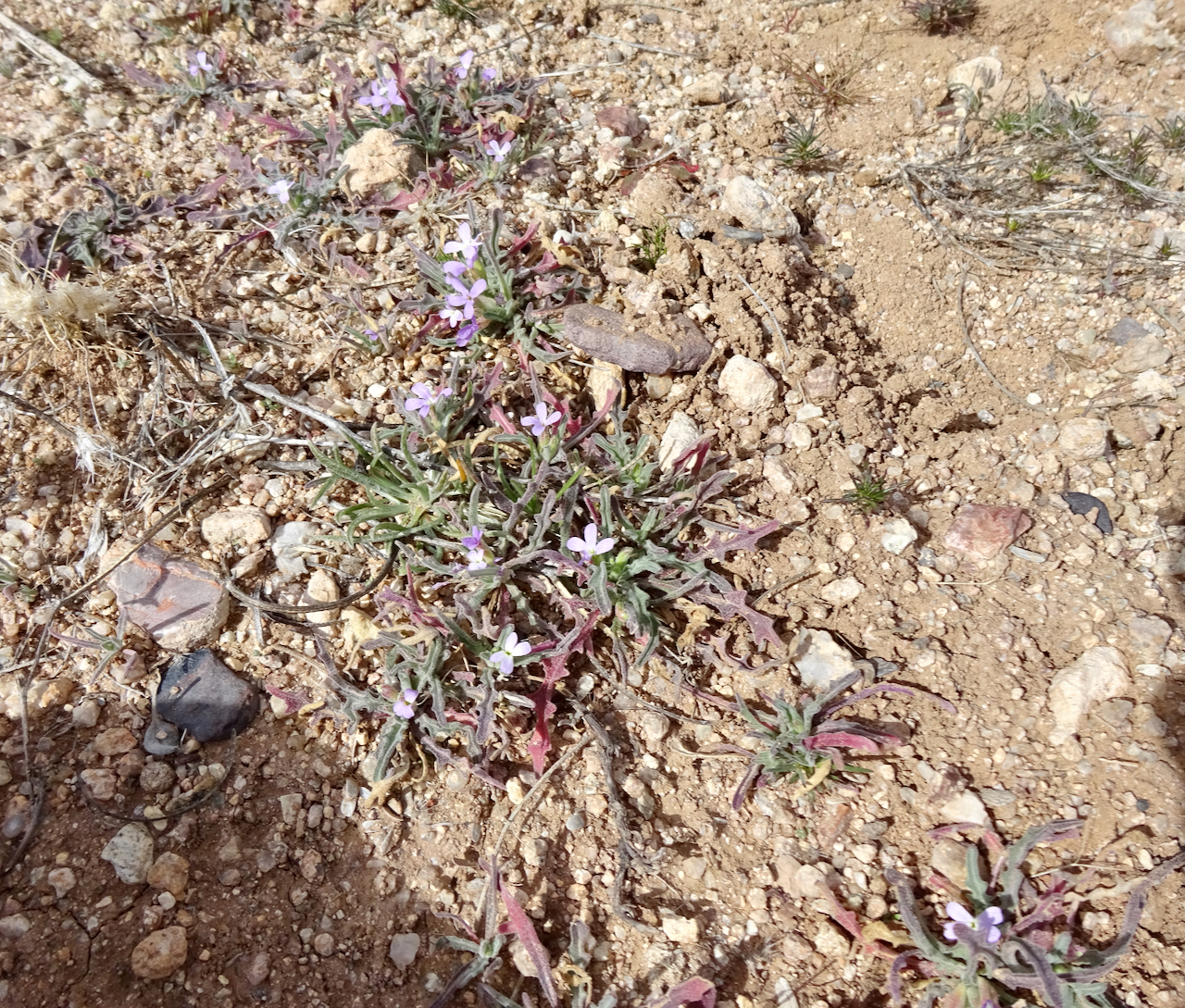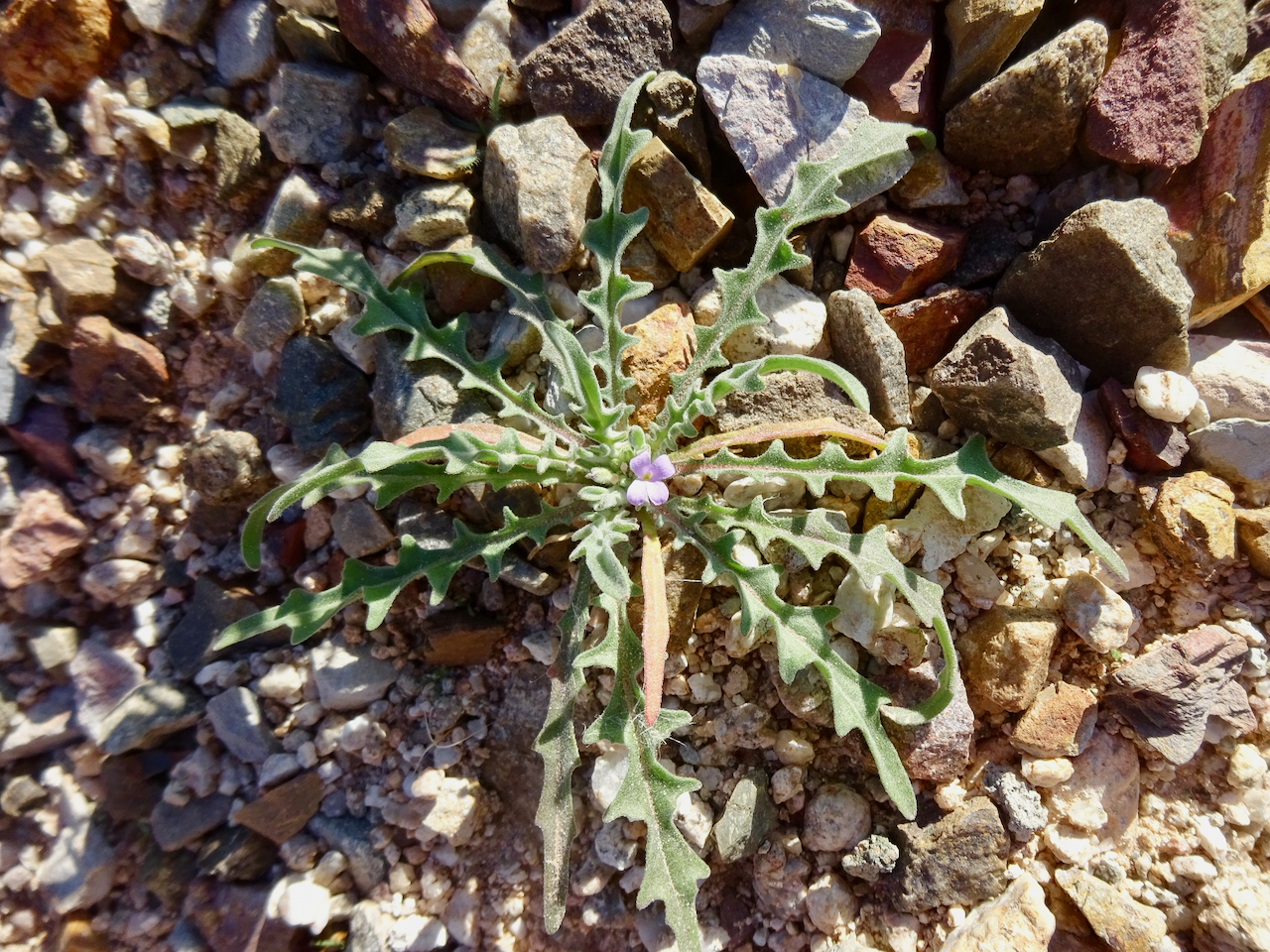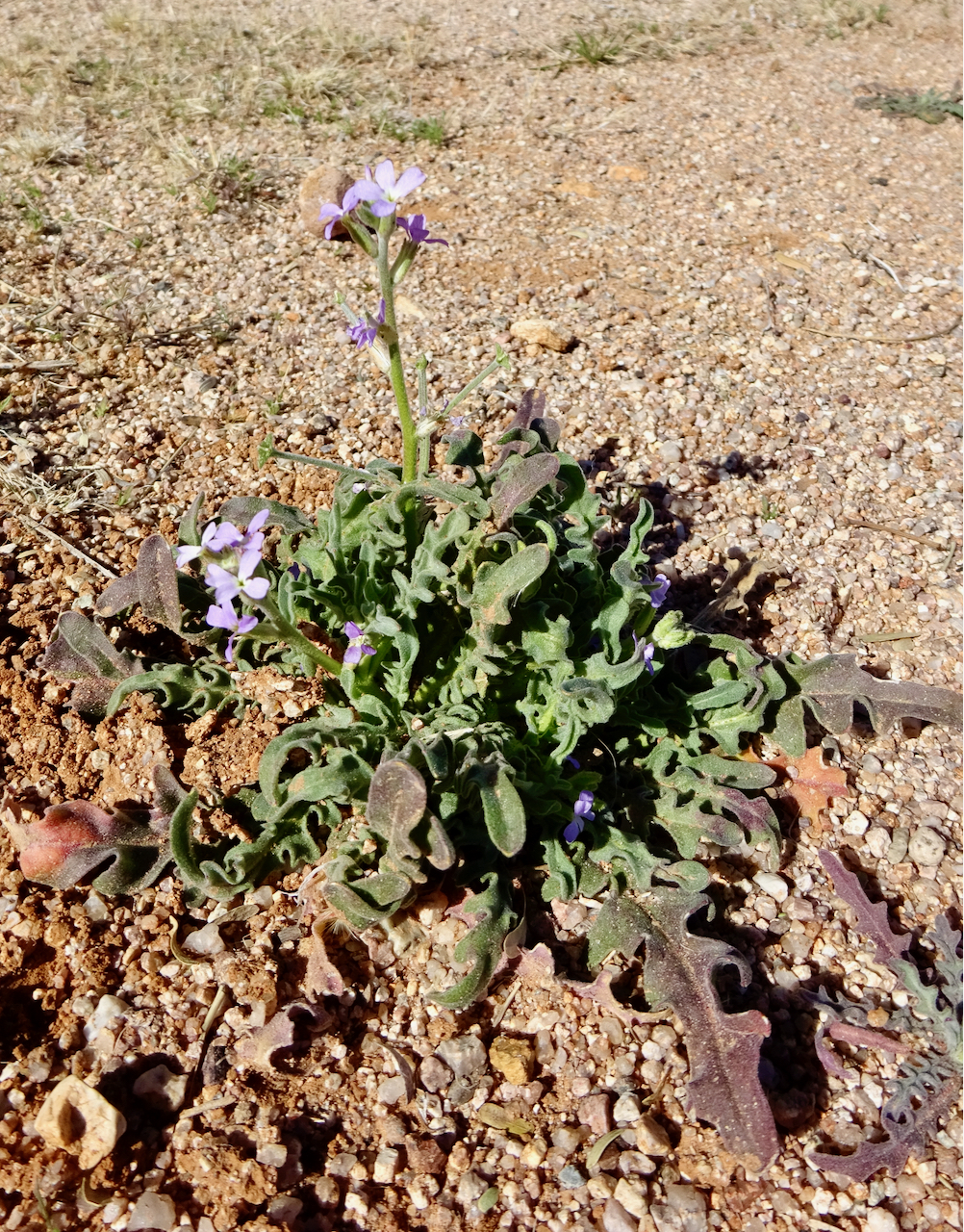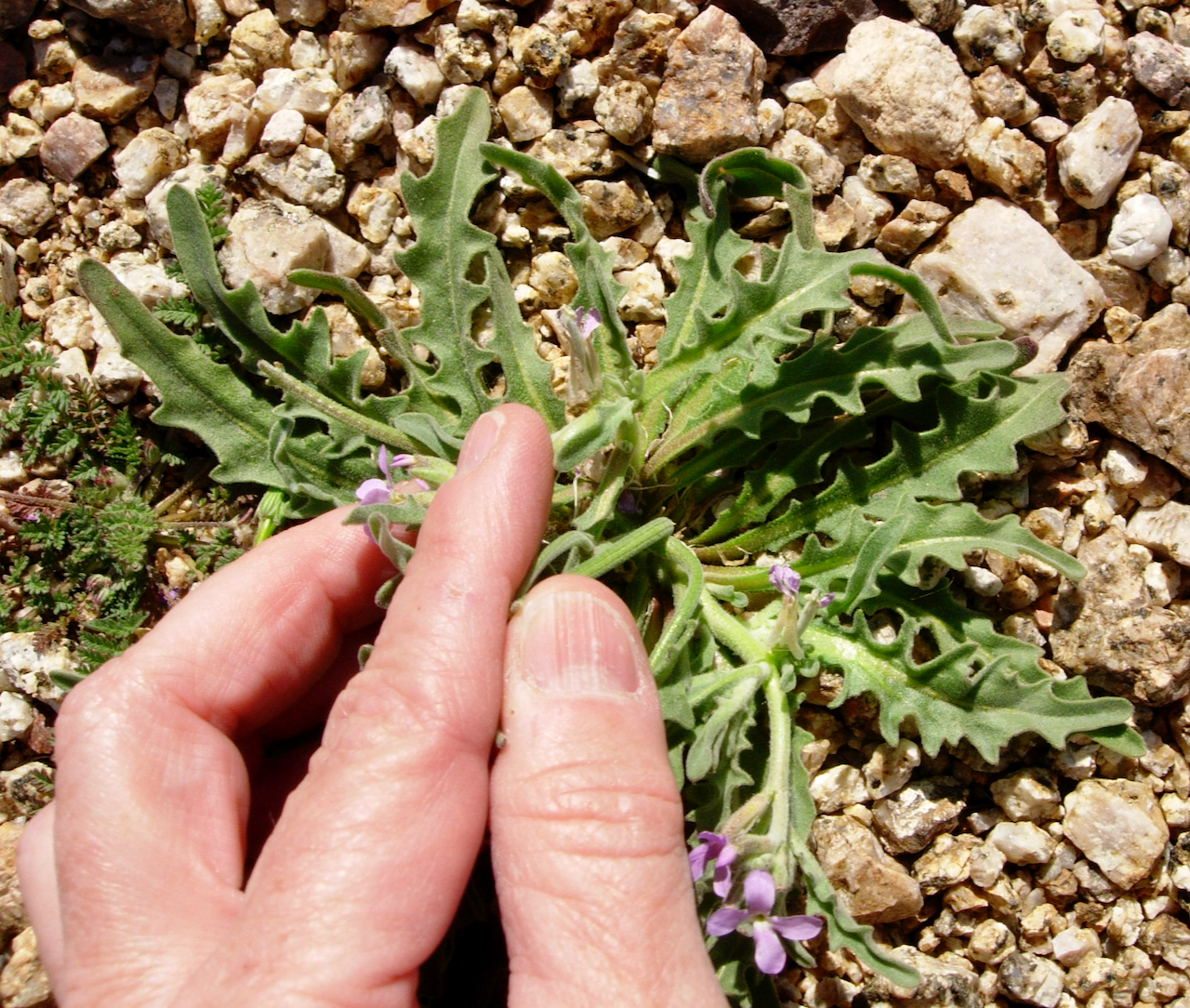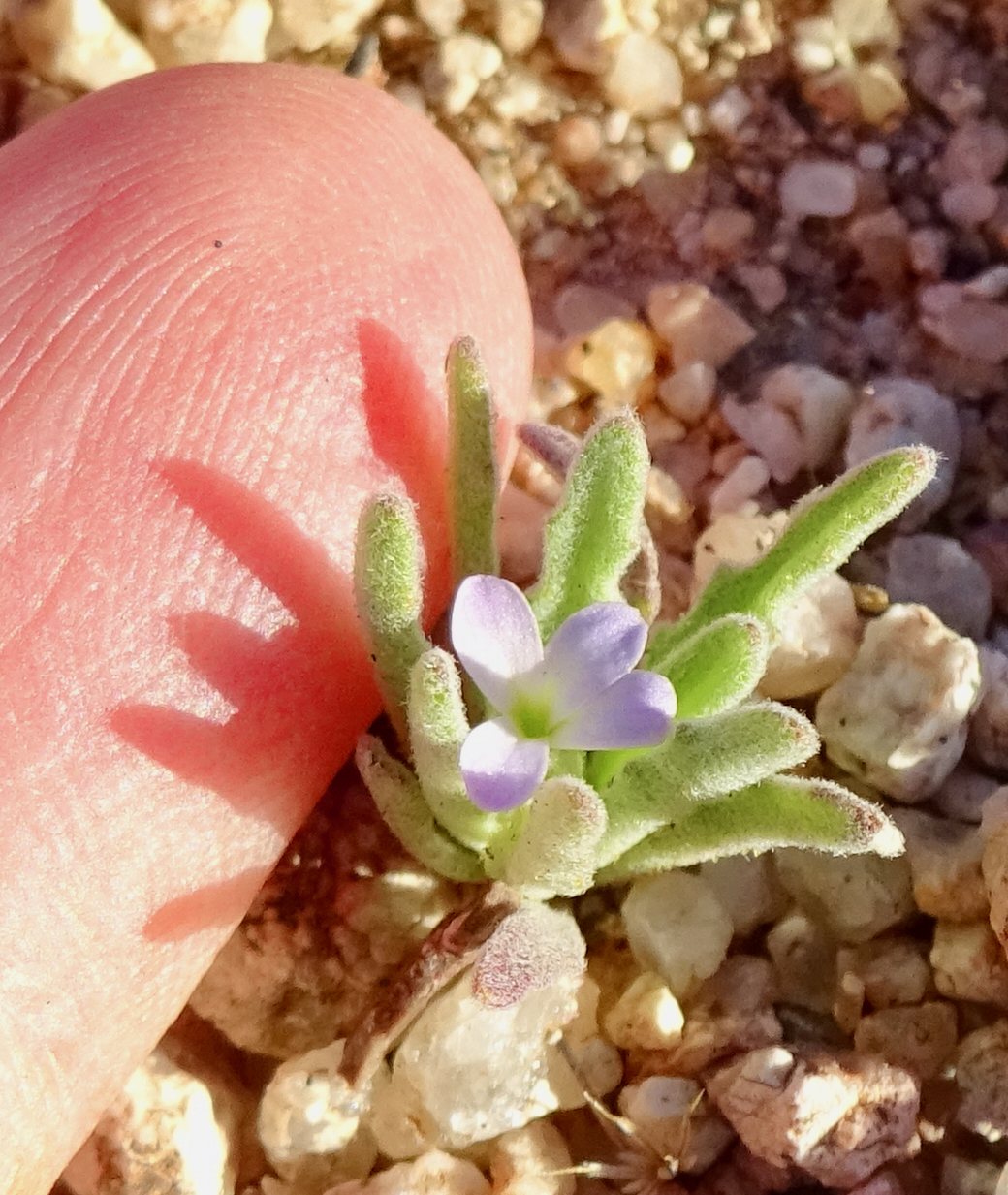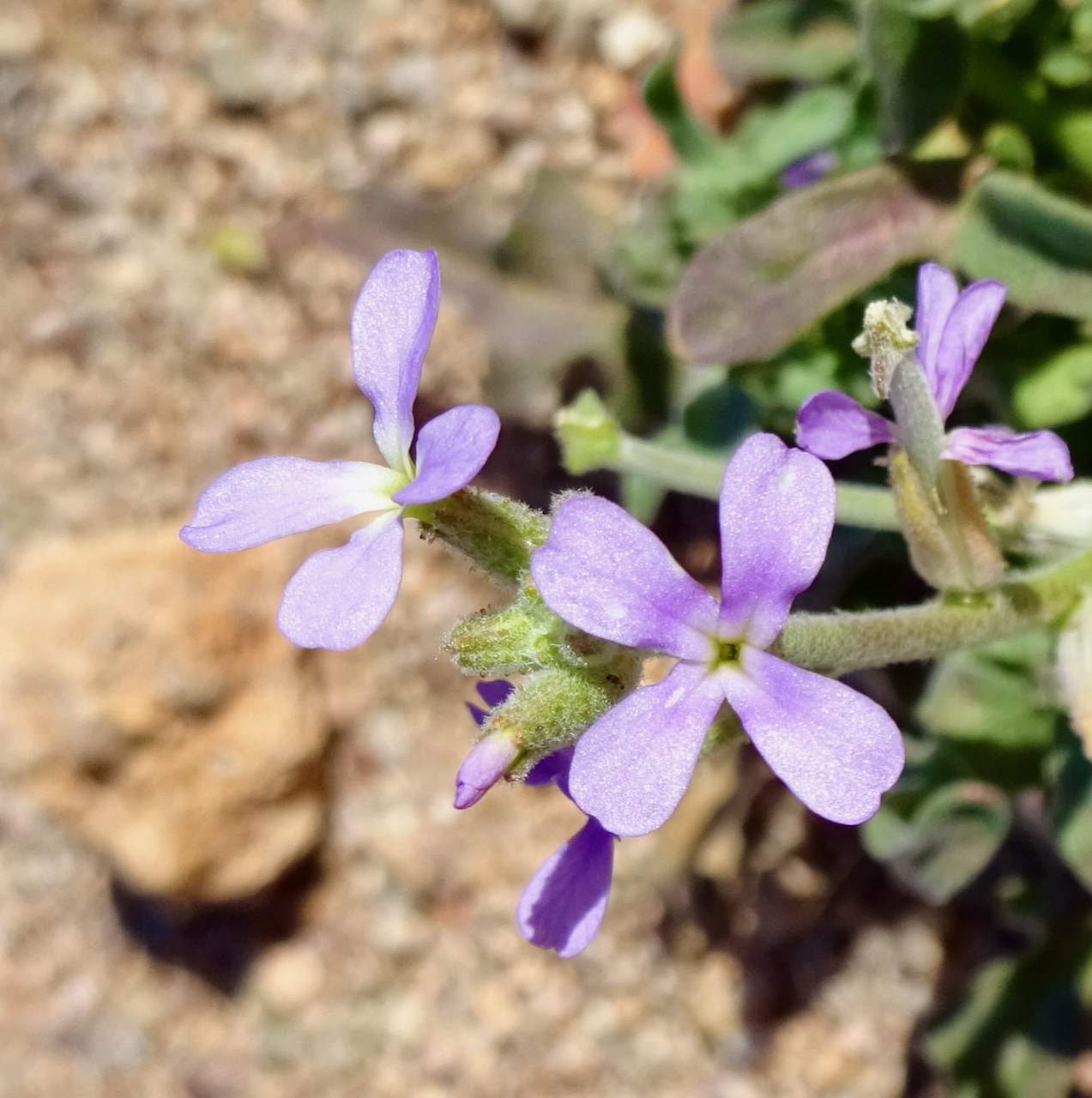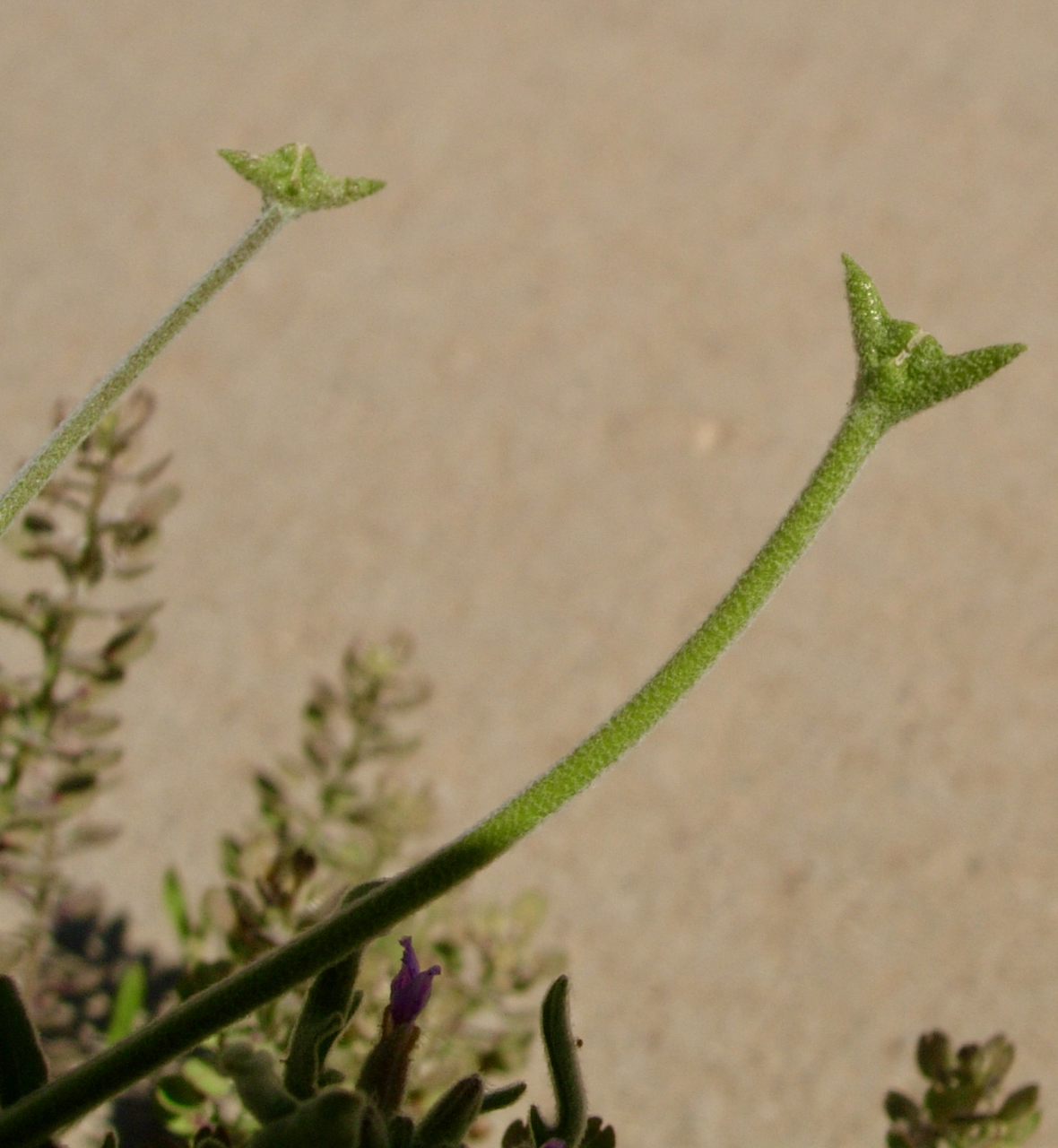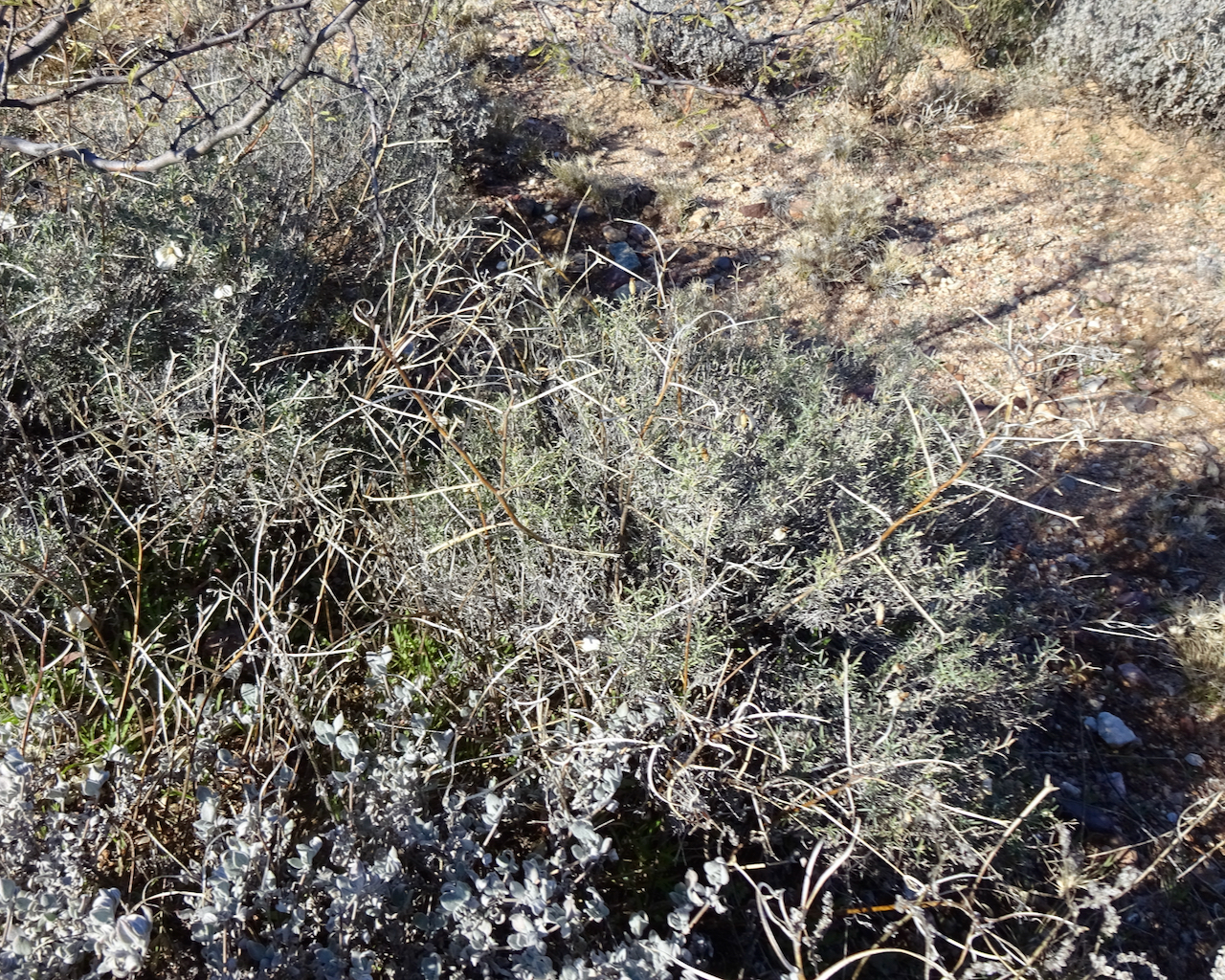Matthiola
Matthiola parviflora
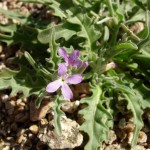
About the Plant
This plant in potentially invasive!
Matthiola is a Mediterranean plant whose first occurrance in the Western hemisphere was near Tucson in the early 2000s. Recent work at University of Arizona suggests this plant is “well established near Tucson, Arizona, with a significant potential for spread.”
Matthiola, a winter annual, is usually flowering by early February. The last few years (2016-2020) have seen this plant spread within Academy Village, often growing among our native spring annuals and other wildflowers. As an annual, one strategy for control is to pull it out of the ground before seeds are released. However, this plant is small and has a taproot. Pulling is tedious and difficult. Scouting should begin early in the season, with plants removed as soon as flowering confirms identity. Be Careful! The leaves of Matthiola may remind you of some of our native plants in the mustard family. Please wait until flowers appear and Matthiola is easy to identify before pulling it out of the ground.
More Information:
Weekly Plant on Matthiola - please follow the links in the article for more photos
Abstract of article describing invasive potential of Matthiola
ID Characteristics
This plant is in the Brassicaceae - the mustard family.
Matthiola grows low to the ground, only a few inches high. Flowering begins when the plant is small. With rainfall, Matthiola can grow to a foot across (second photo).
The basal leaves of Matthiola are light-medium green, sometimes tinged with purple, with evenly spaced lobes or teeth along the edges. They can be up to 4 inches long and about 0.5 inches wide.
The leaves of seedlings are small and barely lobed.
The first flowers are often hidden under the leaves. As the plant grows larger, stems with small, alternate leaves begin to grow, with flowers at their tips. Each flower is about 0.5 inches wide with 4 rounded lavender petals.
The fruit is very thin, about 3 inches long. Look for the two horns, like a dolphin's tail, at the end of the fruit. Another non-native Matthiola species grown in Arizona, Matthiola longipetala (night-scented stock), also has fruit with two horns. This is a much larger plant, growing to a foot high. The flowers of night-scented stock are showy and release a pleasant perfume in the evening.
As the seeds of Matthiola mature, the stalk holding the fruit elongates, often rising above the surrounding wildflowers. You may see these dead, white stalks even into January of the following year. They are a good indication of where new seedlings may appear.
